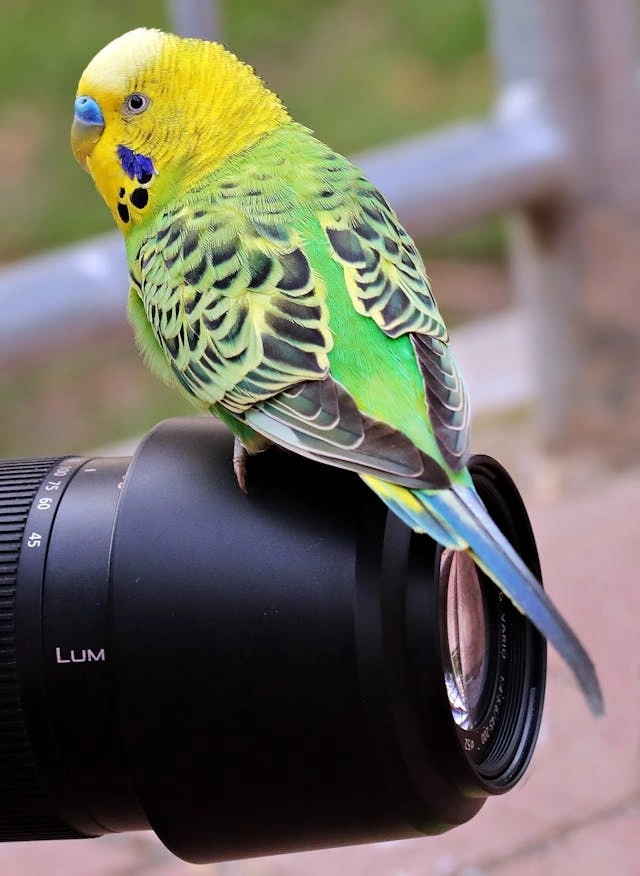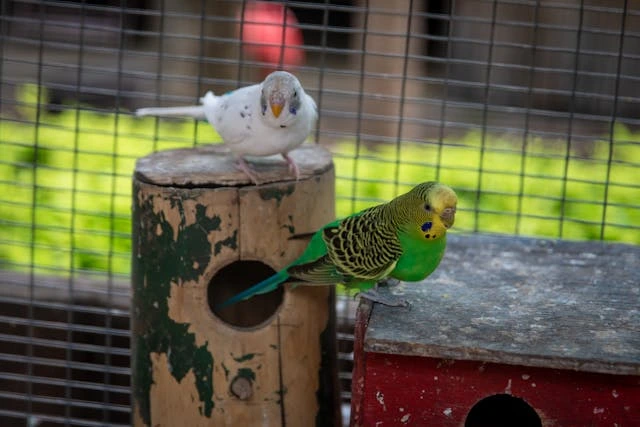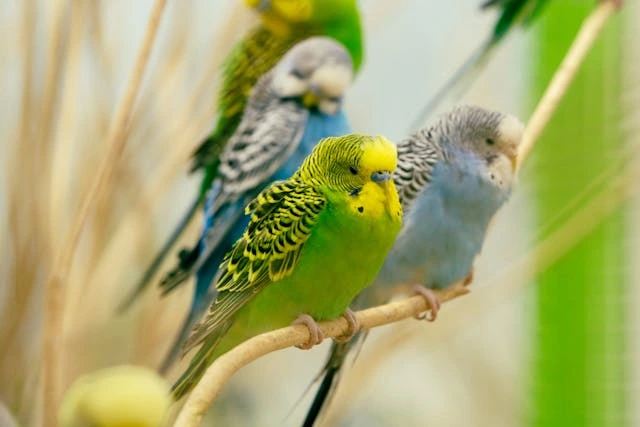Are you ready to welcome a vibrant, chirpy companion into your home? Discover how to care for a pet parakeet and unlock the joys of avian companionship. Parakeets, also known as budgies, are small, colorful parrots that have captured the hearts of bird enthusiasts worldwide. Their playful nature, ability to mimic sounds, and relatively low-maintenance care make them a popular choice for both novice and experienced pet owners. However, providing the right care is essential to ensure these delightful birds thrive.
In this guide, we’ll explore every facet of pet parakeet ownership—from creating an ideal habitat to understanding their unique behaviors and meeting their health needs. Whether you’re a first-time bird owner or looking to enhance your budgie’s quality of life, this comprehensive resource will equip you with the knowledge to keep your feathered friend happy and healthy.
Table of Contents
Introduction to Parakeets
Parakeets are small, colorful birds that have captured the hearts of pet owners around the globe. Often referred to as budgies, these charming creatures are celebrated for their lively personalities and stunning looks. Whether you’re a seasoned bird enthusiast or a first-time pet owner, parakeets offer a unique blend of companionship and entertainment. In this section, we’ll explore what makes a parakeet special, from their origins to their eye-catching appearances.
What Are Parakeets and Their Origins?
A parakeet is a small to medium-sized parrot species with a distinctive long tail, and the term often refers specifically to the budgerigar, or budgie, known scientifically as Melopsittacus undulatus. These pet parakeets are adored for their playful antics and ability to form strong bonds with their owners. But where did these feathered friends come from?
The parakeet origin and history begin in Australia, where they thrive in the wild budgie habitat of vast grasslands, open woodlands, and arid scrublands. In the wild, parakeets are highly social, flocking together in large groups—a trait that translates into their need for interaction when kept as pets. Their journey to domestication started in the 19th century when explorers brought them from Australia to Europe. Since then, their intelligence, adaptability, and cheerful chirps have made them beloved companions worldwide. For anyone curious about the parakeet origin and history, it’s a tale of resilience and charm that continues to unfold in homes everywhere.

Appearance and Varieties
Parakeets are a feast for the eyes, thanks to their vibrant parakeet colors and markings. In their natural state, wild budgies flaunt green feathers with intricate black parakeet feather markings on their wings and backs, accented by bright yellow faces. However, years of selective breeding have introduced a rainbow of colors in pet parakeets, from blues and whites to yellows and even purples, each with its own unique patterns.
One standout feature is the parakeet cere color—the fleshy area above the beak—which plays a key role in parakeet gender identification. Males typically sport a bright blue cere, while females have a brown or tan one, especially when mature. Wondering how to identify parakeet gender? Observing the cere is a simple and reliable method for owners.
When it comes to varieties, two types stand out: the English vs. American budgie. The English budgie is larger, with a more prominent forehead and a laid-back demeanor, making it a favorite for bird shows. On the other hand, the American budgie is smaller, more energetic, and closer in appearance to its wild ancestors. Both types bring their own flair to the table, offering pet owners a choice based on size, temperament, and style.
Preparing Your Home for a Parakeet
Bringing a parakeet into your home is a delightful experience, but it comes with the responsibility of setting up a space where your bird can feel secure and content. This section covers everything you need to know about preparing your home, from choosing the right cage to equipping it with the essentials. With the proper setup, you’ll create a safe and comfortable haven that allows your parakeet to flourish.
Setting Up the Perfect Cage
The foundation of your parakeet’s new home is a well-designed cage that meets their unique needs. A thoughtful parakeet cage setup ensures your bird has a space to rest, play, and explore safely. Start with size: the best cage size for budgies or parakeets is at least 18 inches wide, 18 inches deep, and 24 inches tall for one bird, though larger cages are ideal, especially for pairs or small flocks. This gives your parakeet room to stretch their wings and move freely. Equally critical is the parakeet cage bar spacing—keep it between 1/2 inch and 5/8 inch to prevent escapes or injuries, as these small birds can slip through wider gaps.
Beyond size and spacing, consider the cage’s design and location. Choose a rectangular cage with horizontal bars for climbing and opt for non-toxic materials with a secure door to keep your parakeet protected. Parakeet cage placement is just as important—place it in a quiet, draft-free spot away from direct sunlight and potential threats like pets, yet close enough to family activity for social interaction. This setup not only prioritizes safety but also boosts mental stimulation, as your parakeet can watch and engage with their surroundings. While toys play a bigger role in encouraging foraging behavior, a good cage location lays the groundwork by sparking curiosity and comfort.
Essential Accessories and Toys
With the cage in place, it’s time to enhance your parakeet’s environment with the right accessories and toys. Parakeet cage accessories like perches and feeders are non-negotiable for daily comfort and health. Offer perches of varying sizes and textures—natural wood is a great choice—to keep your bird’s feet strong and active. For feeding, provide separate containers for seeds, pellets, and fresh foods, along with a clean water dispenser that’s easy to reach. These essentials create a functional space tailored to your parakeet’s needs.
Related: Ultimate Guide to Umbrella Cockatoo Care & Behavior
To take it a step further, parakeet toys are vital for keeping your bird entertained and engaged. Boredom can be a challenge for these clever creatures, so include safe toys for parakeets to chew, such as those made from wood, leather, or paper. Avoid toys with small parts or toxic materials to ensure safety. Rotate toys regularly to maintain interest, and consider puzzle toys that hide treats to encourage foraging behavior, a natural instinct that keeps them mentally sharp. By thoughtfully selecting these accessories and toys, you’ll transform the cage into an enriching home that nurtures both body and mind.

Daily Care Essentials
Nutrition and Feeding
A balanced parakeet diet is essential for keeping your bird healthy and vibrant. Parakeets require a mix of nutrients to support their energy, feather condition, and overall well-being. This section explains how to create a parakeet diet plan that includes parakeet-friendly foods, while also offering practical feeding tips to ensure optimal health. From seeds and pellets to fresh produce and supplements, here’s everything you need to know.
Choosing the Right Food
The foundation of the best diet for a healthy parakeet starts with understanding the seeds vs. pellets debate. Seeds are a natural favorite for parakeets, but they’re often high in fat and lack key nutrients when used alone. High-quality pellets, on the other hand, provide balanced nutrition tailored to a parakeet’s needs. A smart parakeet diet plan combines pellets as the main staple with a small amount of seeds as a treat, ensuring your bird stays healthy without overindulging.
Fresh Foods and Supplements
Adding parakeet-safe vegetables and fruits to your bird’s diet brings variety and vital nutrients. The best fruits and vegetables for budgies include leafy greens like spinach, carrots, apples, and berries—great sources of vitamins and hydration. Be cautious, though, as some foods are dangerous; what foods are toxic to parakeets? Avoid avocado, chocolate, caffeine, and anything salty or sugary. For strong bones and beak health, offer parakeet calcium sources like a cuttlebone, and talk to a vet about parakeet vitamin supplements if your bird needs an extra boost.
Feeding Tips and Tricks
Wondering how to introduce new foods to a parakeet? It takes patience—start by mixing tiny portions of fresh foods with their usual pellets or seeds, and offer them consistently. Parakeets can be picky, but they’ll often come around with time. Don’t forget parakeet water requirements: provide clean, fresh water daily in a shallow dish or dispenser to keep them hydrated and happy.
Grooming and Physical Activity
Parakeet grooming and parakeet exercise are daily care musts to keep your bird in top shape. Grooming maintains their feathers and beak, while physical activity keeps them fit and mentally stimulated. This section covers the essentials of both, with tips to ensure your parakeet stays healthy and active.
Grooming Essentials
Basic parakeet grooming includes a few simple tasks. For parakeet wing clipping, many owners wonder how to trim a parakeet’s wings safely. It’s a job that can prevent escapes or injuries, but it’s best done by a vet or with careful research to avoid stress or harm. For parakeet beak maintenance, provide a cuttlebone or mineral block to naturally wear down the beak—see a vet if it grows too long. Bathing is also key; offer a shallow dish of water or a gentle mist to keep feathers clean and shiny.
Exercise and Physical Health
Parakeet exercise is critical for physical and mental health. If your bird’s wings aren’t clipped, try parakeet flight training in a secure room to teach them to fly back to you or their cage. Even with clipped wings, encourage activity with toys like ladders, swings, or ropes for climbing. Regular movement prevents obesity and boredom, ensuring your parakeet stays lively and engaged every day.
Understanding and Engaging with Your Parakeet
Behavior and Communication
Understanding your parakeet’s parakeet behavior and parakeet vocalizations helps you connect with them. This section decodes their actions and sounds for better interaction.
Social and Flock Dynamics
Parakeets thrive on parakeet social behavior and parakeet flock behavior, like chirping or grooming, reflecting their natural instincts.
Daily Routines and Sounds
Parakeet foraging behavior and parakeet sleep patterns shape their day, while parakeet noise levels—from chirps to coos—signal their mood.
Socialization and Training
Parakeet socialization and parakeet training build a rewarding bond. Learn to tame, train, and stimulate your bird for a happy relationship.
Bonding and Socializing
Curious about how to bond with a single parakeet or how to socialize a parakeet with humans? Use treats and soft words to gain trust.
Training Techniques
Start parakeet taming techniques with hand-feeding; for parakeet mimicry training, repeat words daily to teach how to train a parakeet to talk or mimic speech.
Mental Stimulation
Boost parakeet mental stimulation with toys or foraging tasks to keep them engaged and stress-free.
Parakeet Health and Longevity
Lifespan and Common Health Issues
This section examines parakeet lifespan and prevalent parakeet health concerns, helping you understand how long your bird might live and how to spot issues early.
Understanding Parakeet Lifespan
Wondering how long do parakeets live in captivity? Typically, parakeets thrive for 5 to 15 years with good care.
Recognizing Common Health Problems
Parakeet common health problems include parakeet respiratory health issues, psittacosis (parrot fever), iodine deficiency in budgies, and irregular parakeet molt patterns. Watch for signs of iodine deficiency in budgies like lethargy or common health problems in parakeets (psittacosis, scaly mites) signaled by breathing changes or feather dullness—parakeet dust sensitivity can also play a role.
Health Maintenance and Prevention
Discover practical parakeet care tips to maintain your bird’s well-being through consistent routines and vet support, emphasizing proactive health management.
Daily Care Routines
A balanced diet, fresh water, and stimulation are key to budgie care and long-term parakeet health.
Veterinary Care and Quarantine
Regular vet visits and parakeet quarantine practices for new birds help prevent disease and keep your flock thriving.

Breeding and Adopting Parakeets
Basics of Breeding
Breeding parakeets successfully involves understanding the unique aspects of parakeet breeding and captive breeding. For those interested in starting a breeding program, it’s important to consider the bird’s overall health, temperament, and genetic background. The history of breeding, including parakeet breeding history, offers insights into maintaining healthy lineages while preserving natural behaviors.
Understanding Parakeet Breeding History
Learn how breeding practices have evolved—from wild budgie behaviors in Australia to modern captive breeding techniques. This historical perspective helps ensure that your breeding practices support genetic diversity and promote robust, healthy offspring.
Key Considerations for Breeding
- Environment: Ensure a spacious, secure setup with proper parakeet cage arrangements that include nesting areas and perches.
- Nutrition: Provide a balanced diet rich in essential nutrients such as parakeet diet components and calcium sources (cuttlebone) to support reproductive health.
- Health and Behavior: Monitor your birds for signs of stress and maintain regular parakeet health checks to prevent issues that could affect breeding success.
Adoption Tips
Adopting a parakeet can be a fulfilling way to bring a new pet into your home. When considering parakeet adoption, it’s essential to know what to look for in a healthy, well-socialized bird.
Where to Buy Hand-Reared Parakeets
Opting for hand-reared parakeets is advisable for first-time pet owners. These birds are more accustomed to human interaction and easier to tame and train. Look for indicators of a healthy bird such as bright eyes, smooth feather markings, and an active demeanor.
Preparing for Your New Pet
- Cage Setup: Arrange a parakeet cage setup that is spacious and secure, with enough perches and toys to keep your pet engaged.
- Balanced Diet: Ensure the diet includes a mix of parakeet food, from pellets to safe vegetables, tailored to meet nutritional needs.
- Socialization: Give your new pet ample time to adjust to its environment using gentle taming techniques and regular interaction, enhancing its natural social behavior.
Conclusion
Owning a parakeet is a journey filled with color, chirps, and companionship. From understanding their origins and setting up the perfect cage to mastering daily care, socialization, health, and even breeding or adoption, this guide has covered the essentials for a thriving parakeet. By committing to responsible, excellent care, you’ll not only ensure your bird’s happiness and longevity but also enjoy a truly rewarding pet experience. So, take these key takeaways to heart, and let your parakeet soar in a loving, well-prepared home!
Resources
The Complete Book of Parakeet Care by Annette Wolter and Monika Wegler
Parakeets For Dummies by Nikki Moustaki
